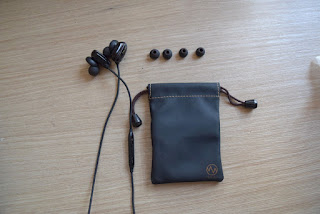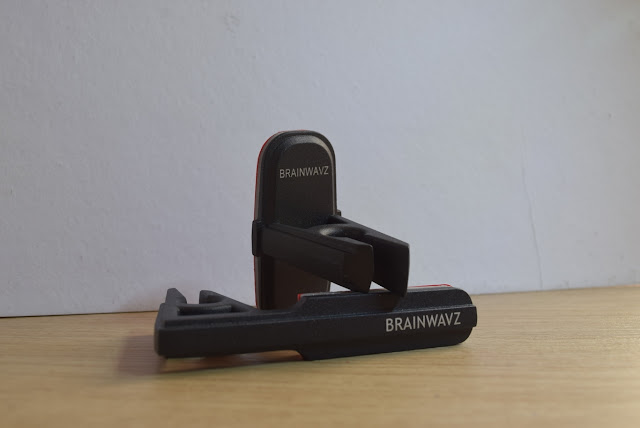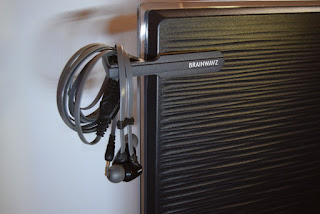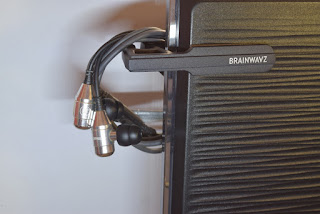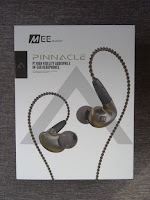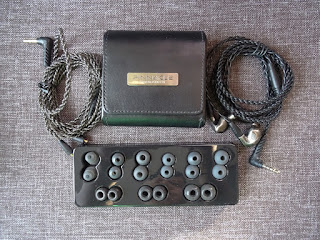
Brainwavz has been hard at work over the past year, having released the HM100 headphones, the BLU-300 Bluetooth earphones, and the Zeta budget earphones over the past 12 months. But we are reviewing none of those today – instead, we'll be taking a look at their latest release, the Koel. Priced at 60 dollars, these earphones are meant to be an entry point into Brainwavz' acclaimed balanced armature line. Given their reasonable price point, will they be a solid gift to give this holiday season? Let's find out.
TL;DR: If you take the time to look past its shortcomings, the Brainwavz Koel with its durable build and balanced, versatile sound, will serve to be a reliable friend for any budding audiophile.
(Full disclosure: Brainwavz sent me a unit of the Koel free of charge in exchange for my honest opinion on this review, with no obligation to explicitly promote their website or their products. The earphones were tested for about two weeks before the publish date of this review. Although I will try to describe the Koel in a way that can apply to you, this review is still based on my own personal experience and will not be exactly the same as yours.)


Right off the bat, the Koel scores points for its perfectly rectangular packaging – just the right shape for easy gift wrapping. Jokes aside though, the outside of the box is simple, with not too many details to speak of besides an embossed logo and "24-month warranty" on the front. Inside you get the standard Brainwavz accessory package – a cable tie, shirt clip, earphone case, six pairs of eartips in three sizes, and a pair of Comply foam eartips.

The earphones themselves, however, are a different story. Like Brainwavz' other offerings in their balanced armature earphone line, the housings of the Koel are crafted using what they call liquid resin 3D printing. A few minutes of research tells me that the process works by solidifying liquid resin layer by layer to create a defined shape. This, Brainwavz says, allows them to create shapes that could otherwise not be achieved by traditional 3D printing. As far as I can tell, they have definitely succeeded on that front. The clear plastic resin makes the Koel a treat to look at, with a housing shape that is quite unlike anything I've reviewed before.

The Koel also impresses in terms of build quality. The housings feel solid and well put together, and the resin 3D printing process ensures that there are no rough edges that can be detected. The cable, which uses much of the same components as those found in Brainwavz' catalogue, is lightweight but not very confidence-inspiring. Despite that, Brainwavz modified this cable to be removable and therefore replaceable, using the industry-standard MMCX connector. This means you won't run out of replacement options should the cable eventually fail, making sure that the Koel will last a very long time.
Before I even received the Koel in the mail, I have had some concerns about the nubs that stick out of the earphone's main candy-like shape. These concerns were confirmed to an extent, as the nubs created a pressure point on my ears that became annoying after a few minutes of listening, although I managed to get used to the sensation and ignored it after a few days of testing. I do have a hard time imagining the Koel without these nubs, however, as they do serve their purpose of helping to secure the earpieces on your ears, working in conjunction with the heat-formed cable ear hooks. Overall I had no issues with the fit or the comfort, although I suggest that you take your time with them so you get used to the nubs. With the way the Koel sounds, though, I doubt you would have any trouble logging in the hours.

For an earphone priced at 60 dollars, the Koel stands out among the crowd for its balanced but ultimately midrange-forward sound. Since the Koel uses a single full-ranged balanced armature driver, a weaker bass impact is not too much of a surprise. However, I find it interesting how Brainwavz is embracing this characteristic and taking it even further, unlike other balanced armature earphones like the MEE Audio A151P and even Brainwavz' own B200 that compensate for the thinner low-end by adding more warmth to the overall sound.
I would like to make clear, however, that midrange-forward is different from midrange-centric, as the Koel is still relatively balanced sound-wise. Sure, the bass takes a few steps back, but it's never out of the picture by any means. As expected of a balanced armature, the Koel's low end lacks the impact and extension more commonly heard in a dynamic driver, but it manages to convincingly reproduce the aggressive moods of heavy EDM styles (see Rogue – Unity, Figure – Must Destroy) without sounding shallow or empty. But as is also expected of a balanced armature, the Koel has a tight, well-controlled bass response that has no trouble speedingx` through recordings with thick basslines, although the drivers do distort quite a bit at higher volumes (see Daft Punk – Giorgio by Moroder, Lose Yourself to Dance).

The rest of the Koel's frequency response does not suffer from the same issues, however. The midrange is clean, direct, and straight to the point in its delivery (if a bit too forward and fatiguing at times), eschewing a smoother, sweeter tone in favour of a more versatile sound that ultimately helps tick the boxes for a wider range of music styles. Despite that, it still renders vocals with the same sort of conviction that reminds me a bit of the FAD Heaven 2, a fellow balanced armature earphone whose midrange tone I am in love with (see M2U – Yoake no Uta (ft. Dazbee), Masashi Hamauzu – The Yaschas Massif). The treble is noticeably smooth and free of any intense peaks besides one at around 7 kHz that adds to the fatiguing feel I mentioned earlier. The Koel also has a pretty good soundstage helped in part by an airy quality in the midrange and treble, resulting in a head space that never feels cramped, but conversely doesn't feel particularly spacious.
With all that said, is the Koel the one-for-all gift earphone? I wouldn't really say so for a few reasons. The stock bass distortion stands out as the most glaring issue, which makes them unacceptable for listeners who might want to boost the bass by even a little bit. The stock cable is also a little too short compared to what I've seen from Brainwavz, and although they are replaceable, doing so is not exactly cheap, coming in at about $20 dollars a pop (before discounts) for Brainwavz' own replacement cables. As I've already pointed out earlier, the nubs are also a mild annoyance, which add to the list of what makes the Koel a bit of a standout earphone in my opinion.

But maybe that's a good thing. Maybe bass distortion at high volumes is a good thing – it might be telling us not to listen to music so loud. Maybe annoying pain on the ears after extended listening sessions is a good thing – it might be telling us to take a short break. Maybe the Koel is all the better for all of the things I dislike about it.
When I think about it, the Koel is kind of like a friend that you've known for a long time. He has a bunch of flaws, both glaring and subtle, that you are perfectly aware of. And although that may be so, you still consider him your friend and wouldn't trade him for the world. And, from my experience with the Koel, I wouldn't trade it for the world either.
Packaging, Accessories: 8/10. Standard Brainwavz package. Has everything you need, nothing you don't.
Design, Build, Microphonics: 8/10. Interesting looks, solid build, good cable (albeit a bit short).
Fit, Comfort, Isolation: 7/10. Pretty good across the board, but the nubs are annoying after a while.
Bass: 6.5/10. Lean, tight, and controlled, but distorts quite a bit at higher volumes.
Midrange: 8.5/10. Clean, direct, and versatile. Can't go wrong with it.
Treble: 8.5/10. Crisp and clean, although slightly fatiguing.
Presentation: 8/10. Good all around, but otherwise unremarkable.
Other Media: 7.5/10. Not sure what's actually exploding, whatever's in the movie or the distortion from the drivers.
EQ Response: 6.5/10. Bass is arguably its only weak point; too bad you can't boost it without the drivers distorting.
Value: 8.5/10. Priced quite competitively for its feature set.
Total: 7.7/10. If you can make it past its flaws, it's a very good IEM that will last you a long time.






























































